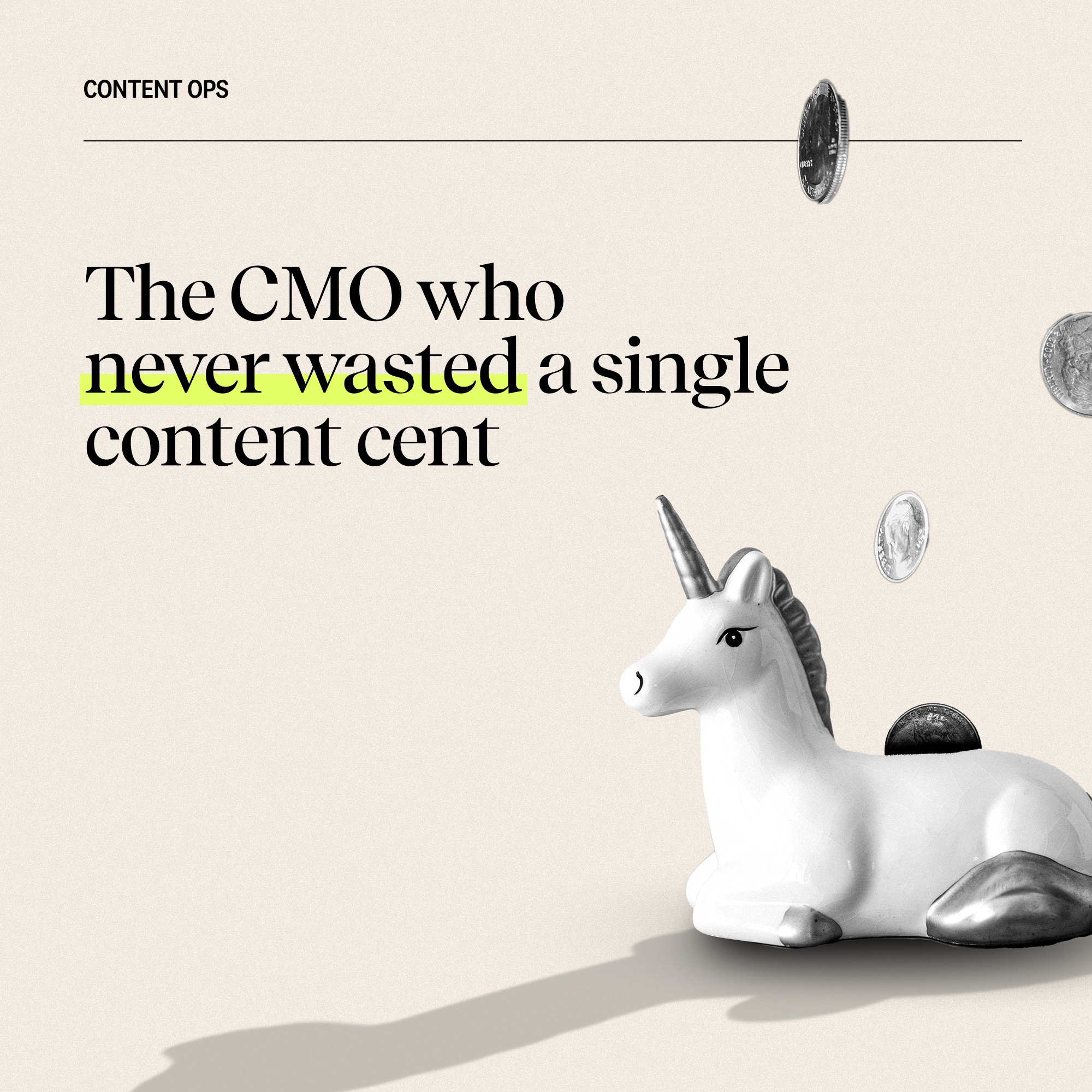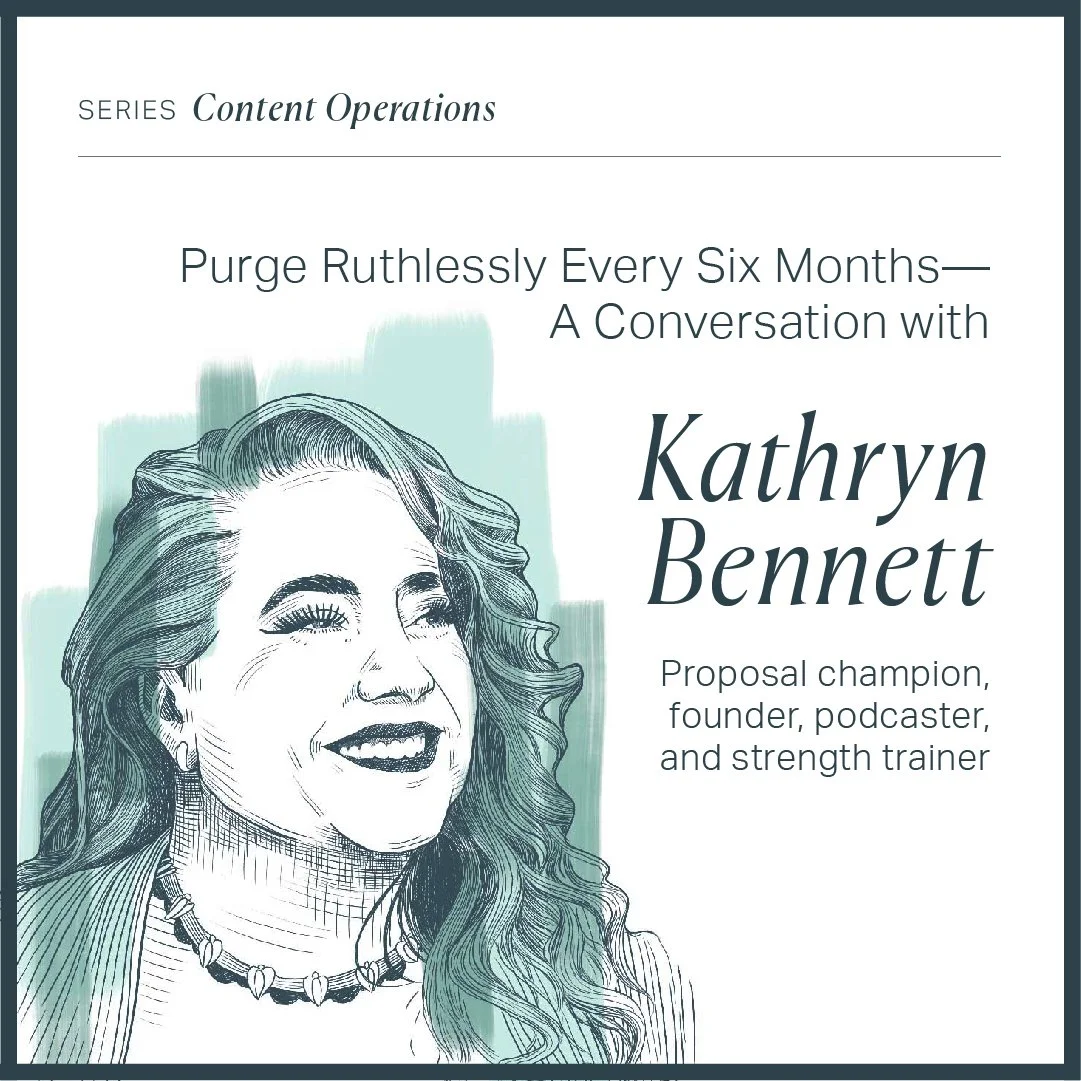A Blog Is Not a Strategy
Chris Gillespie | January 5, 2023
Five friends of Fenwick weigh in on the question, “Why even publish?”
Fifty-one percent of the time someone reaches out to Fenwick to purchase writing they wind up buying something entirely different. Usually research. That’s because we are relentless about knowing why they need the writing.
Usually, our questioning leads our clients (and us) to reevaluate the request and clarify that they don’t need articles per se. They need the outcome of having continuously published uniquely useful ideas for so long they’ve become known for it. They want the leads, the awareness, the affinity, the results. And if that’s what they want, well that requires a very different thought process. A lot more needs to happen. If all we did was write the articles as requested, they wouldn’t get what they want.
Seasoned content writers know this dance well. They are forever helping people disentangle their true needs from their requests. Each content person has their own way of doing this, and I think it’d be nice if we could all get our unique methods to converge.
This year, as a start, I interviewed five of the smartest people I know in content. Today I share six salient takeaways, including why you first need to find narrative-market fit, the value of deleting old stuff, and why hiring is the quickest way to improve quality.
1. DIAGRAM YOUR “content operation,” WHICH IS every LITTLE THING needed to publish and measure
Anyone can commission articles. Not just anyone can pen an article that makes a buyer pause and think, “Wow I never thought of that. Wow, that’s wise. Wow, I could really learn from these people.” And an even smaller number of people can run an operation that keeps churning out work of this quality for years without burning out the crew.
To accomplish it, you need a well-defined and repeatable idea-to-article pipeline that connects content creators to unique sources of knowledge and preserves the integrity and specificity of those ideas. Here’s how Christine Deakers, Head of Editorial at Bessemer Venture Partners, defines it:
“To me, [content operations] includes the strategy, the management, the overall orchestration of getting content out into the world to build a relationship with an audience. That includes not just what is being produced and figuring out who is doing the producing, but also understanding how to package content in a way that's going to satisfy your company’s goals.”
Hear more from Christine:
And to add to Christine’s point, as Jillian Wood, Director of Content at Coconut Software, reminds us, documentation is a nice-to-have but not always necessary. If you only have time to do one thing, simply publish:
“For me, these processes have always been pretty informal and mostly in people's brains. I’m definitely for systems, templates, and standards. But sometimes, I forgo fancy operations for the sake of production.”
2. If you don’t have narrative-market fit, attention is irrelevant
Content marketers get a bad rap for gratuitous and rambling introductory stories. But if they’re telling the right tale to the right people, it doesn’t matter what you, or I, or anyone else thinks. If bonafide buyers buy it, that’s success. Additional opinions may only dilute its potency. Really good content operations mine that source of truth—their buying audience—and judge success by the praise and engagement they earn in return. (Partially measured in purchases.)
This is a vital point worth restating. If your narratives don’t connect with the people who can initiate a purchase, it’s not worth publishing. Even if you’ve got the attention of CEOs and board members. Yoni Argaman, VP of Marketing at Salto, discovered this the hard way. Executives loved his team’s overarching, executive-focused narrative. But it didn’t generate sales:
“[The story] never really translated directly into business. The reason was, [after our messaging enticed executives], there’d be a second conversation. Those executives would excitedly introduce us to their Salesforce lead or NetSuite developer, and these people weren’t necessarily interested in the cross-application use case. They each lived within one application, so to speak, and wanted to hear about what we could do in that singular system. Our takeaway was that application-specific teams needed application-specific stories.”
Yoni’s lesson was to find Salto’s super users and hire them to do the telling.
Hear more from Yoni:
3. Your program must relentlessly pursue originality or it will perish
At a certain age, every business loses its teeth. It transforms from insurgent into the establishment it once campaigned against and develops paralyzing conflicts of interest. It quakes at the idea of offending big customers. Lawyers insert their review hooks. Quality sags. Frankly, I don’t know how to fix this once things get to that point. But as for growing so successful you eventually have that problem, our interviewees have some advice: Thrill a few highly engaged audiences at the expense of everyone else—and take risks to do so.
Because it isn’t until you state who you’re not for that the people you are for find you credible. As Christine explains it:
“Follow the same strategy vertical SaaS companies do—start by serving a niche and expand into adjacent audiences over time through new products. The expansion only goes well once you’ve established that initial trust and foothold … from there, you can plan for your next act.”
And as Suhas Sreedhar, Director of Content at Coupa, told me in our interview, you’ll know it’s the right message when it has a “How did nobody think of this before?” simplicity to it.
Hear more from Suhas:
4. A single blog post rarely achieves much—it’s all about the enduring program
An amateur practices until they get it right. An expert practices until they cannot get it wrong. Don’t celebrate bottling lightning once—celebrate doing it weekly. Celebrate that it’s become a way of life.
The danger of celebrating too early, or celebrating one-off wins rather than structural ones, is you are forever chasing unrepeatable hits of success, and the quality fluctuates. Says Yoni:
“Many people fall into the trap of generating lots of high-level content that checks the boxes, but lacks in specificity … anyone can publish a handful of good articles. Only teams with a repeatable system can do it 15-20 times.”
Or as Jillian puts it, “A single blog post rarely achieves much.” It’s about the consistency of it and the system that makes good ones possible.
Hear more from Jillian:
5. Spend half your time updating and deleting
You can’t always just create. You must pause, reflect, and reorient. The beauty of so much of our work living online and remaining editable is you can return to improve it, and Google will reward you for doing so. You don’t have to see particularly far in advance to do this, either. You just have to consistently spend time fixing as you go. As author E. L. Doctorow says about writing long novels: “You can see only as far as your headlights, but you can make the whole trip that way.”
Refurbishing, fixing, killing, reducing, and rejigging is how you iterate to greatness. Or as Kathryn Bennett, Senior RFP Writer at GoGuardian, explains:
“I think a lot of people understand the principles of creating and distributing good content, but not the ways in which they maintain their library. Something like 60 percent of marketing material never gets used, so how you store, reuse, and update it is really important.”
And to call Kathryn an advocate of deleting unused content is a dramatic understatement.
That final repository where you store all content should present delightfully to both buyers and your team. People should feel it’s easier to search your site for content than it is to search Google or Google Drive, and that you have lots of uniquely useful stuff. Internally, everyone should be able to find what they’re looking for so they can share, repurpose, and not recreate it because they couldn’t find it.
“An ideal marketing library is searchable, democratic, controlled, and abundant.”
Hear more from Kathryn:
6. QUALITY IS REALLY A QUESTION OF hiring curious people
One final bit of advice. As powerful as a good operation can be, it will only ever offer directional guidance. Ultimately, every operation needs a clear owner with an intuitive sense of what pocket stories are delightful, what statistics will be alarming, and who in that industry your buyers want to hear from. It demands people who have taste.
How does Jillian ensure that? It all comes down to hiring:
“Are they the type who can look around the organization, keep their ear to the ground, pick up on stories and trends, and keep them in their back pocket? Or know when to release that story and where? Or gather small bits of knowledge and build them into something bigger—or take a big meaty thing and chop it down? … How do you build a pipeline for ideas? I hate to say it, but it's always highly reliant on the people you hire.”
Who should we feature next? Nominate someone at team@fenwick.media
Want to keep in touch? We publish a twice-monthly newsletter about writing craft.













